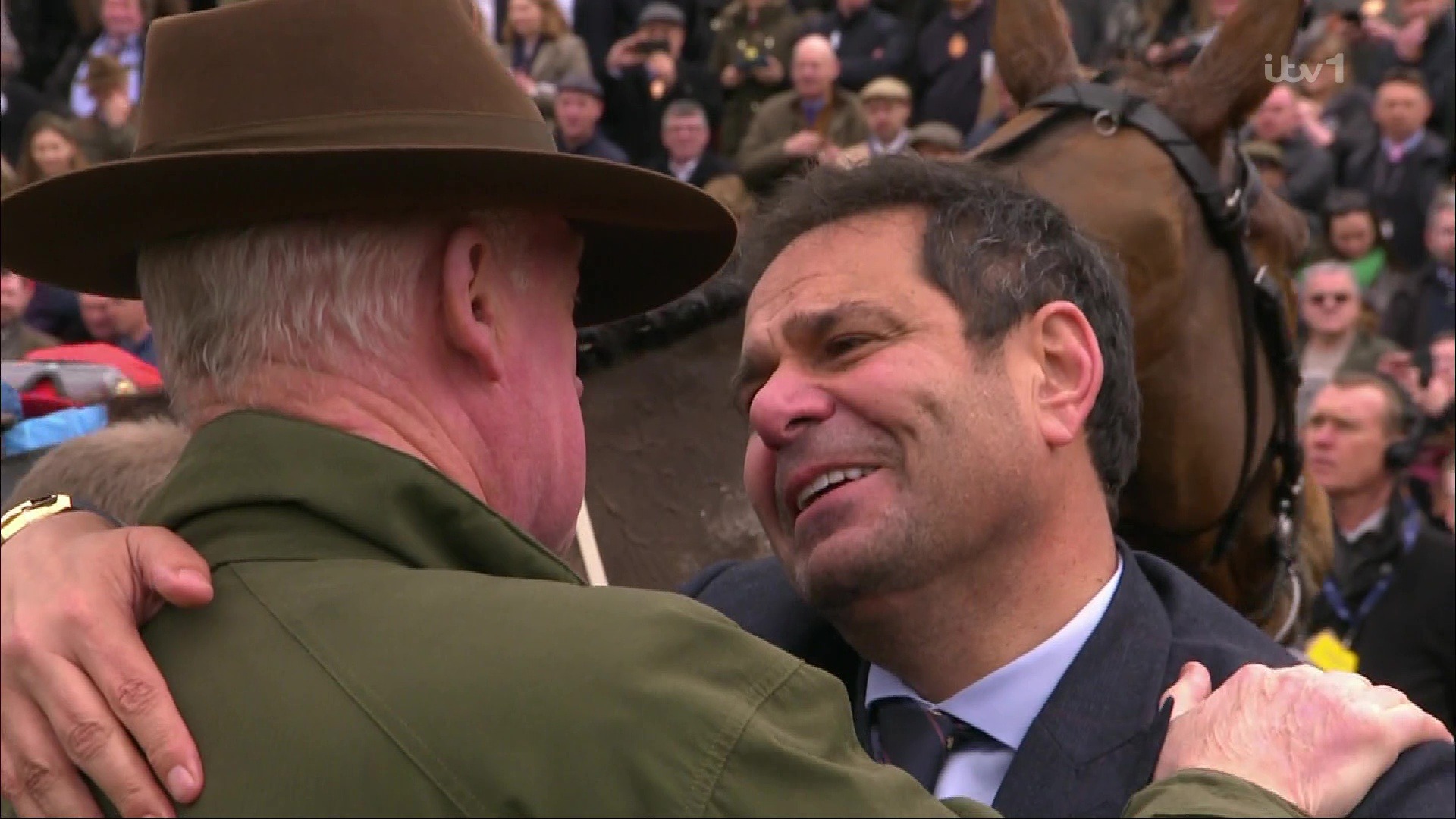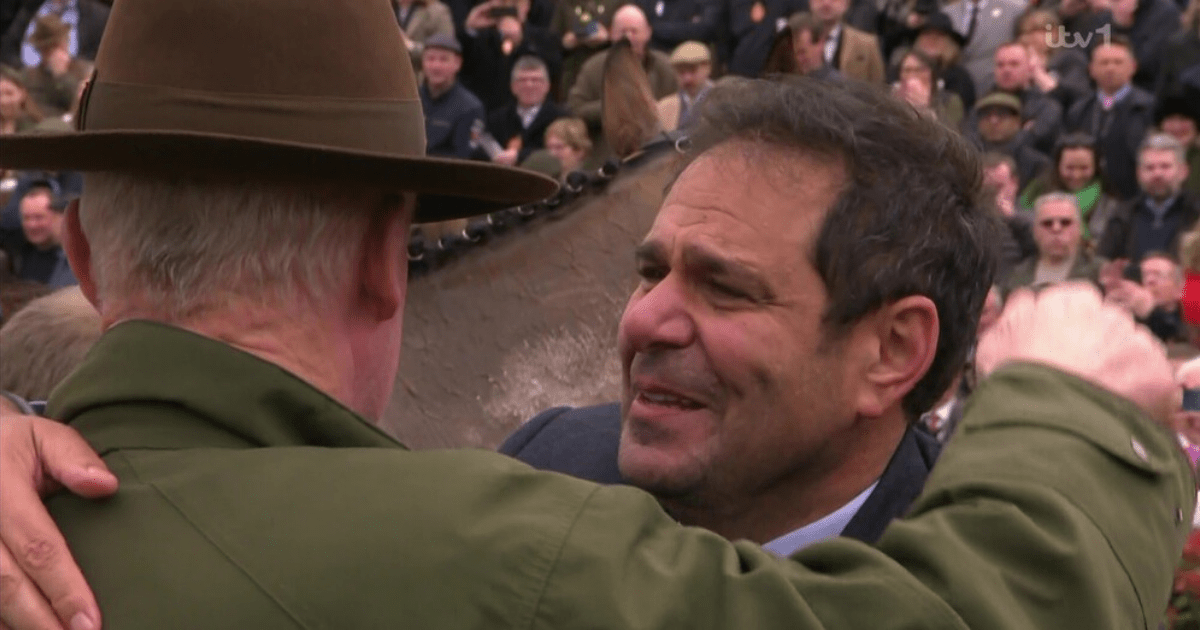Emotional Victory
Gareth Bale's agent, David Manasseh, was brought to tears after Ballyburn's impressive win at the Cheltenham Festival. The six-year-old mare dominated the field in the Novices Hurdle, leaving Manasseh overwhelmed with emotion.
A Dream Come True
Manasseh, co-founder of agency CAA Stellar and representative of stars like Bale, Jack Grealish, and Luke Shaw, expressed his pride in Ballyburn's victory. The horse's win marked a special moment for Manasseh, who is used to working with top athletes.
Future Success
Ballyburn's triumph at Cheltenham solidified its place as one of the best in Willie Mullins' training yard. With Mullins' track record and Ballyburn's talent, more wins could be on the horizon for Manasseh to celebrate in the future.
Heartfelt Moment
After the race, Manasseh spoke to the media, visibly emotional and out of breath from the excitement. His journey with Ballyburn leading up to the race had been challenging, making the victory even more meaningful for him.

Friendly Competition
Manasseh faced off against friend and colleague Tony Bloom, owner of Ile Atlantique. Despite Bloom's £100,000 bet on his own horse, it was Ballyburn who stole the show and left Bloom's hopes shattered after finishing third.
Frequently Asked Questions
What are the different methods of race training for different horse breeds and types?
As breed characteristics and race distances vary, so can the training methods for horses. Thoroughbreds which are associated with long distance flat racing undergo different training to Quarter Horses which specialize in sprinting over short distances. To meet the physical and behavioral characteristics of each breed, a customized approach is required.
How do you maintain a racehorse’s mental well-being?
Mental health is just as vital to a horse’s performance as physical conditioning. Racehorses’ psychological well-being is enhanced by varied routines and mental stimulation. Ensuring the horse has social interaction with other horses and providing a calm, stable environment helps to prevent stress and behavioral issues.
How often are racehorses trained?
It is important to tailor the frequency of training a racehorse according to its needs, level and schedule. A typical daily routine would consist of exercises such as walking and trotting. More intense workouts such as galloping, or breezing, are performed several times per week to increase stamina and improve speed. Rest days help the horse recover and avoid overtraining.
What is the initial step to training a racing horse?
During the first phase of racing a horse, there is a critical “breaking” stage where the horses become accustomed with a saddle, bridle or the weight from a rider. During early sessions, the horse must be taught to accept human contact and wear the equipment throughout his racing career.
What’s the best kind of diet for racing horses to follow?
A racehorse diet must be of the highest quality and balanced precisely to meet their energetic requirements for training and racing. It generally consists of a combination of high-grade hay, grains such as oats or barley, and commercially prepared feed designed for racehorses. A diet that is rich in essential vitamins, minerals and nutrients will support the horse’s health and help them perform at their best.
What is a trainer’s role in training a racing horse?
Jockeys play a critical role in the training of racehorses. Not only do they ride the racehorses during workouts and give feedback, but they help educate the horse on racing tactics. The jockey’s ability to understand the horse and its strengths and weakness is crucial for preparation.
Statistics
- The average cost to train a thoroughbred racehorse for one year can exceed $50,000, accounting for expenses related to training, boarding, and veterinary care.
- Around 80% of thoroughbred racehorses begin their racing careers by the age of two, according to industry estimates.
- Gastrointestinal issues affect up to 90% of racehorses during their training, emphasizing the need for careful dietary management.
- Racehorse mortality rates during racing have been observed to be between 1.5 to 2 deaths per thousand starts, depending on the racing jurisdiction.
- Studies suggest that proper early training can reduce the risk of musculoskeletal injuries in racehorses by up to 50%.
- Research has found that a racehorse’s stride length can increase by up to 7% following specific strength and conditioning programs.
External Links
grayson-jockeyclub.org
racingpost.com
horseracing.com
britishhorseracing.com
paulickreport.com
thoroughbredracing.com
How To
How to Monitor Racehorse Health and Maintain It Throughout Training
In order to maintain a racehorse’s health, regular health checks are essential. Daily visual inspections are essential. Pay attention to the horse’s behavior, gait and appetite. Regular veterinary visits, including dental and foot care, are recommended. Track heart rate data after exercise to detect deviations. Treat minor concerns as soon as possible to avoid them becoming serious.

